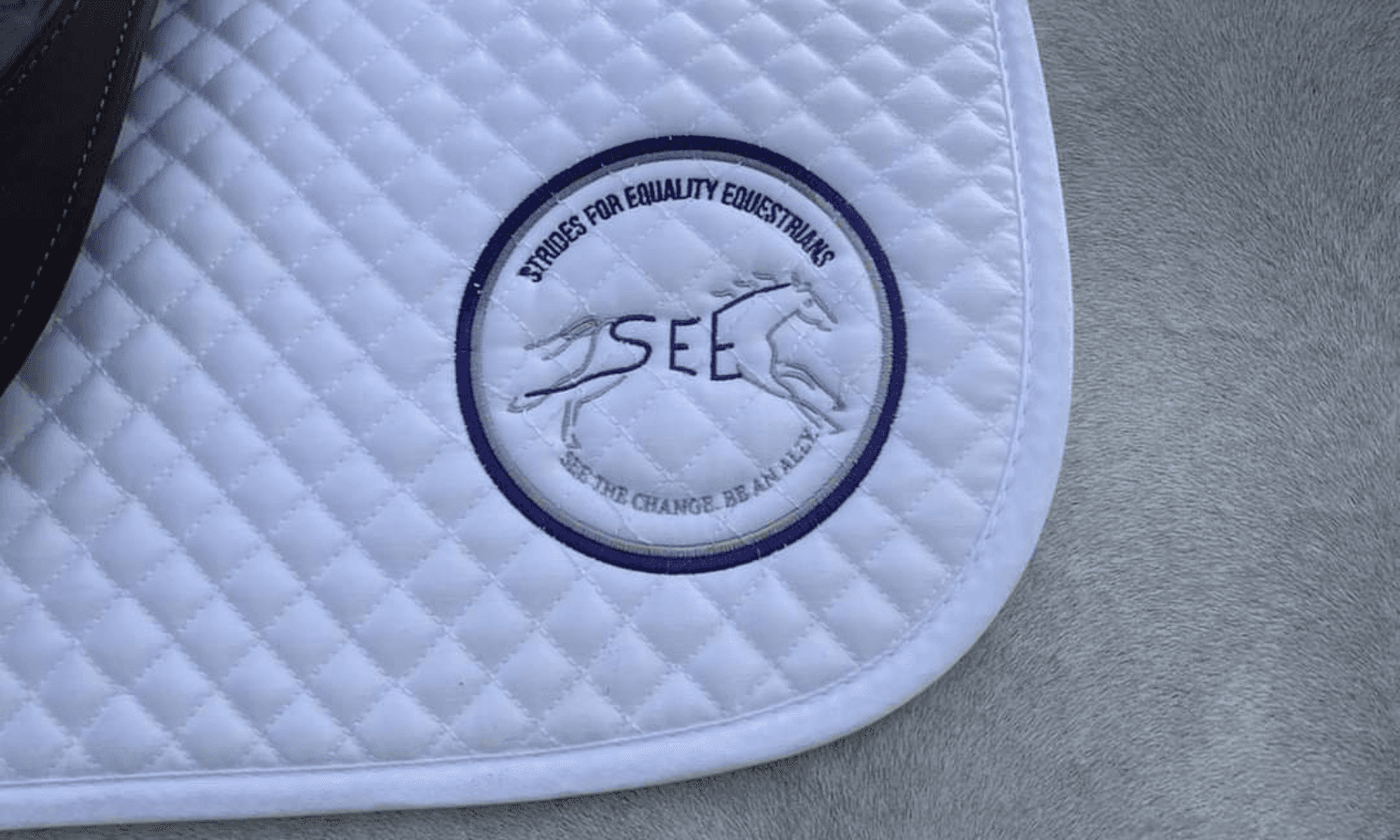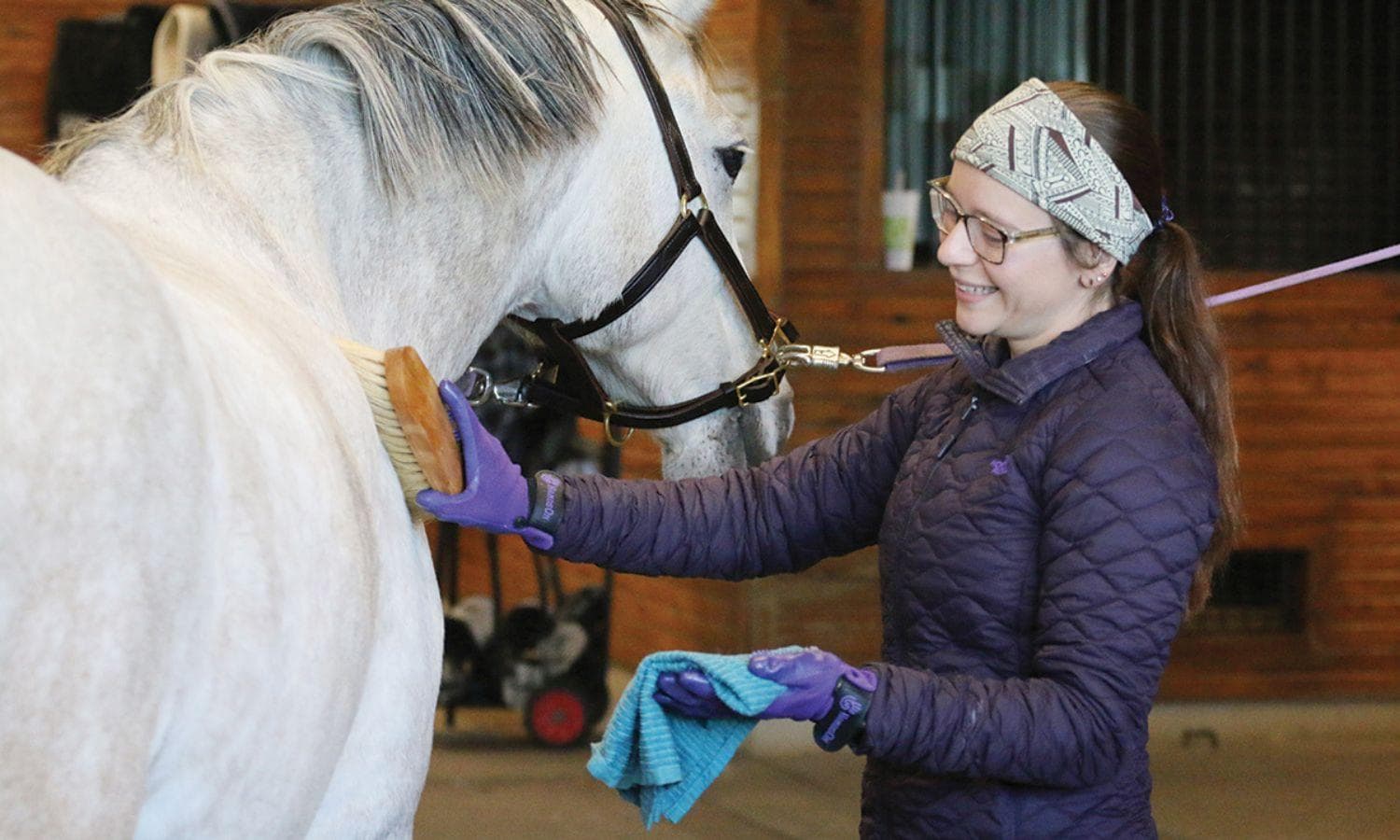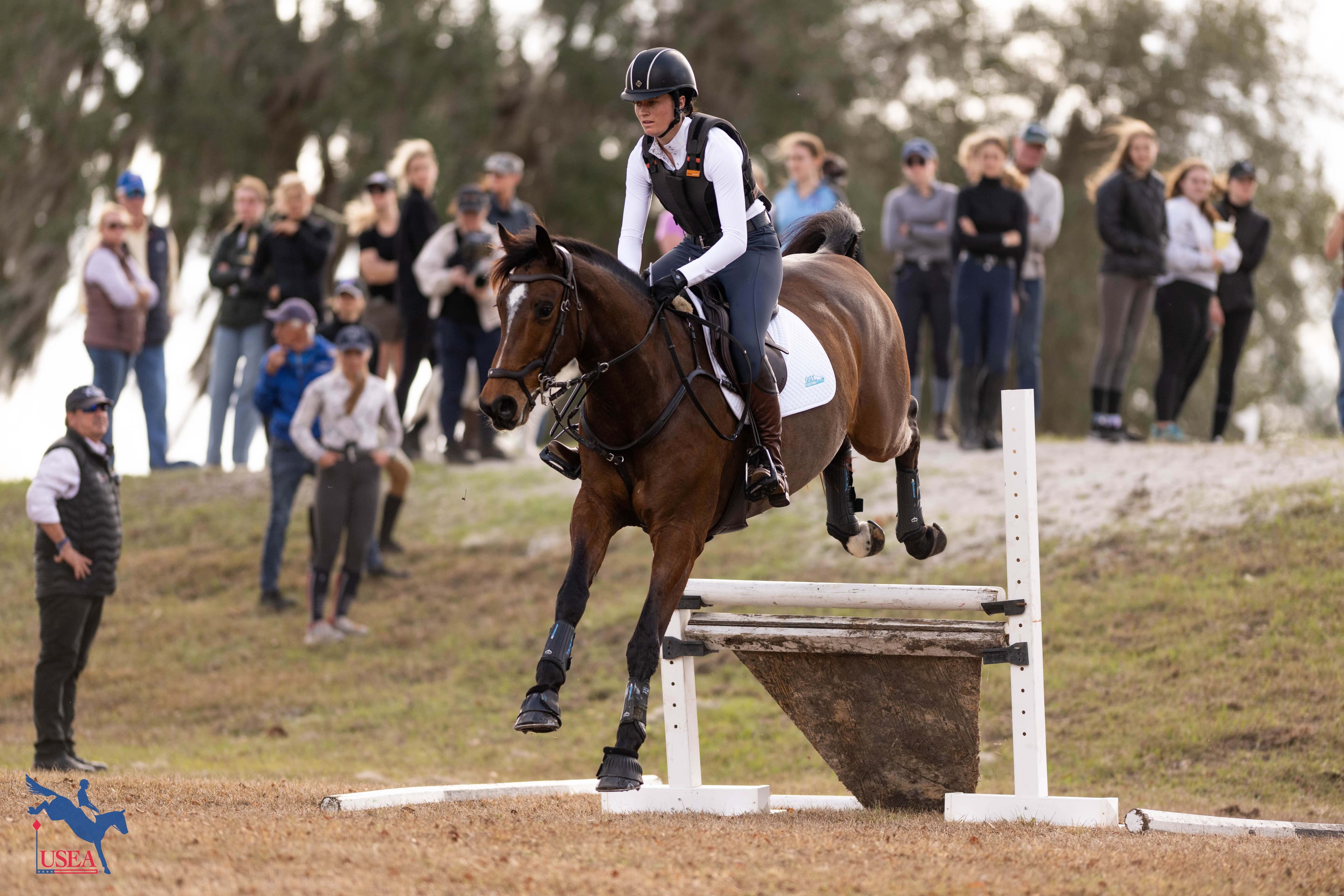Eventers Making Strides for Equality in Equestrian Sport

As we honor and recognize the federal Juneteenth holiday, it is an important time to reflect on diversity, equity, and inclusion: where we have been and where the eventing community can continue to grow. One organization that has been leading the way was established in 2020 by a passionate group of eventers, Strides for Equality Equestrians (SEE). Focusing on the fact that the United States is becoming increasingly more diverse but seeing a lack of equivalent representation or recognition of Black, Indigenous, or people of color (BIPOC) within equestrian sport, the group endeavored to not only push for growth and change, but to also work towards making sure that BIPOC equestrians were able to see allies within eventing and other equestrian sports. The leaders of SEE have made tremendous strides in the past two years. As they look to the future, there is an incredible amount of work still to be done.
Speaking at the USEA Annual Meeting and Convention regarding the inspiration for the creation of SEE co-founder Dr. Anastasia Curwood said, “in the spring of 2020 the USEA decided it should do its first article on diversity in eventing. This was just after the murder of George Floyd and the resulting protests. So, I was happy to talk to [the USEA]” said Curwood. “We began to meet, and we realized that there were four basic needs that we could try to meet. First of all, we recognized the need for growing eventing and equestrian sport in general.” Curwood continued, “we know that there is a whole constituency of folks who might love eventing that we just need to draw in. The second thing we identified is there is a need for recognition of a heritage of people, equestrians, of color over the entire equestrian sport in this country and beyond. There is a myth that there are no equestrians of color just because there aren’t very many of us. There is also a need to listen to and acknowledge the experiences of these equestrians of color both positive… and negative.... The third need was that we saw that we needed allies and recognition from equestrians. It can be hard to find allies and we needed allies to be able to broadcast and express that they are allies in a more outward way. Finally, we identified a need for education and positive dialog so that we can enhance the experiences of current members and open the sport to new members.”
Building Equitable Access
As SEE worked to increase equitable opportunities for BIPOC equestrians they set their focus on providing social and economic support to like-minded organizations. They created two programs to meet these goals; the Access Directory and Access Grants.
Access Directory
The SEE Access Directory provides information on programs across the U.S. that are working to make equestrian sports more accessible to young people who identify as BIPOC. The organizations on that list are pre-screened by SEE. The directory lists organizations by name, location, and a basic description of their work. Additionally, SEE has identified the groups that provide various programs including literacy & education, free/reduced fee service, competitive opportunities, horse-based instruction, BIPOC youth service, scholarships & grants, and therapy. The directory currently lists 14 different organizations located across the country.
Access Grants
The leadership of SEE wanted to take a step further and not only voice support for likeminded organizations but also provide financial support. In collaboration with the USEA Foundation, SEE is directing grants towards many of the organizations identified through the Access Directory including Detroit Horse Power and Saddle Up and Read.
SEE Co-founder Heather Gillette said, “we wanted to take the donations we got and channel them into community riding programs. They are all over the country, people think that there aren’t many or there are only a couple, but they are everywhere. A growing need, some are very small, not very well funded and they don’t have websites or what have you and there are other more organized ones. They are everywhere and they need help and support. So, it was logical for us to be loud allies, be proud allies, and try and influence the younger generation and these programs that are trying to bring young equestrians into the sport.”
Developing Professional Pathways
Growing out of their efforts on improving access, SEE realized that they had a number of allies including world class equestrian athletes and coaches willing to step forward and help. Internships and other bridges to entry into the sport became a focus.
“We called it the Professional’s Pathways Program. It has the Ever So Sweet Scholarship and other various scholarships we are working on, networking opportunities and not just for riding necessarily. If you are interested in being a course designer, farrier, if they want to be a vet or see if they want to be a vet, we wanted to provide career oriented networking” said Gillette.
To date SEE has announced the initial recipients of the Ever So Sweet Scholarship to include Helen Casteel, Siera Lesny and Nora Huynh-Watkins.
In the case of Lesny, the young rider was able to base with international athlete and coach Sara Kozumplik at her farm in Ocala, Florida and gain countless new connections into the eventing network.
“The education and relationships I gained as the Ever So Sweet Scholarship recipient is something that will stay with me forever” Lesny stated. “Along with learning so much, these connections can only help me as I go on to build my own career. More than anything this opportunity has given me the confidence and tools to make my own way in this industry. This is an extremely hard industry that takes so much hard work and dedication, but you have to have the right people backing you and helping you along the way. It can be quite overwhelming to figure out how. Sara [Kozumplik] was able to give me great advice and contacts before I left which has taken me leaps and bounds beyond where I was before I arrived in Ocala.”
Recognizing Heritage
Did you know that the great boxer Joe Lewis was an avid horseman? Or that in the 1940s two women of color, Ruby Nicholas and her daughter Dorothy Cumbo were able to host horse shows in New York City despite the barriers created by Jim Crow law and customs? Through the SEE website, the organization has worked to provide thoughtful educational information like this to the public.
“We’ve done a series of educational social media posts about Black history, or Latinx history, or Native history in horses” said Curwood. “A lot of people have also recently learned about Juneteenth and so we did a series about what is Juneteenth and then we actually connected it to horses.” Curwood showed that the history of the United States is filled with BIPOC with a direct connection to horses. “We provide an infographic of two women celebrating one of the earliest Juneteenth celebrations in Texas and there’s a horse pulling their cart and it shows the history of people of color with horses.”
Adding Visible Allies
Amongst the primary goals of SEE since its founding has been engagement and education to promote allyship. The group has successfully partnered with numerous entities including the United States Equestrian Federation, the USEA, Eventing Nation, WiSP, Equitana USA and a number of competitions including the MARS Great Meadow International (MARSGMI), the Maryland 5 Star, The Event at Rebecca Farm, TerraNova Equestrian Center, and the USEA American Eventing Championships. In each relationship the partners clearly share the values of SEE and are committed to improving diversity to create a stronger, more visible community of allies within equestrian sport.
In the case of the MARSGMI the event was one of the very first to join with SEE. Former USEA Board members Darrin Mollett and David O’Connor viewed the work of SEE as important to the future of the sport. “We are honored to be partnered with SEE,” said Darrin Mollett of Five Rings Eventing (FRE), the organizer of MARSGMI. “Sports, as in all things, are better when more people can belong. If we can encourage more participants in eventing, we will be more competitive in the long run. Growing diversity and inclusion within the sport is important to me and to my FRE partner, David O’Connor.”
Another effort of the leaders of SEE is the expansion of the SEE brand. As the logo of the organization becomes more recognized and understood, allies are often seen wearing SEE pins, patches and logos on their clothes and tack at equestrian activities across the country. At the most recent USEA convention professional athletes, horse owners, competition organizers, community leaders, and former USEA Presidents could all be seen proudly wearing the SEE logo. The group also pushed for the initial creation of the USEA Diversity, Equity and Inclusion Committee as a formal committee within the USEA. That group was specifically created by the USEA Board of Governors to increase USEA membership by advancing diversity, equity, and inclusion in service to the sport of eventing, for current and prospective members. The group mimics the mission of SEE; however they specifically advise the USEA Board of Governors on matters related to diversity, equity and inclusion and advocate for BIPOC representation in USEA leadership positions. SEE welcomes partners to reach out and connect.
Education and Positive Dialog
Finally, SEE develops and publishes educational content that explains anti-racism; promotes informed allyship; supports organizational diversity, equity, and inclusion work; and elevates the visibility of BIPOC equestrians today. While the efforts to address diversity, equity and inclusion have a long history of conflict, SEE have worked to follow the legacy of Dr. Martin Luther King. Dr. King utilized education and non-violent acts to direct action during the 1960s and in doing so helped dismantle the Jim Crow system, while at the same time confronting the violence that it was built upon. Today, SEE works to educate while at the same time pushing for others to recognize the barriers that have existed, and still exist today, for BIPOC to become active contributors and participants in eventing.
Connect with Strides for Equality Equestrians (SEE) on their website, Facebook, and Instagram.
For further inquiries or to support Strides for Equality, please contact:
Media Relations: Sally Spickard - [email protected]
Sponsorship Inquiries: Catherine Reddick - [email protected]














